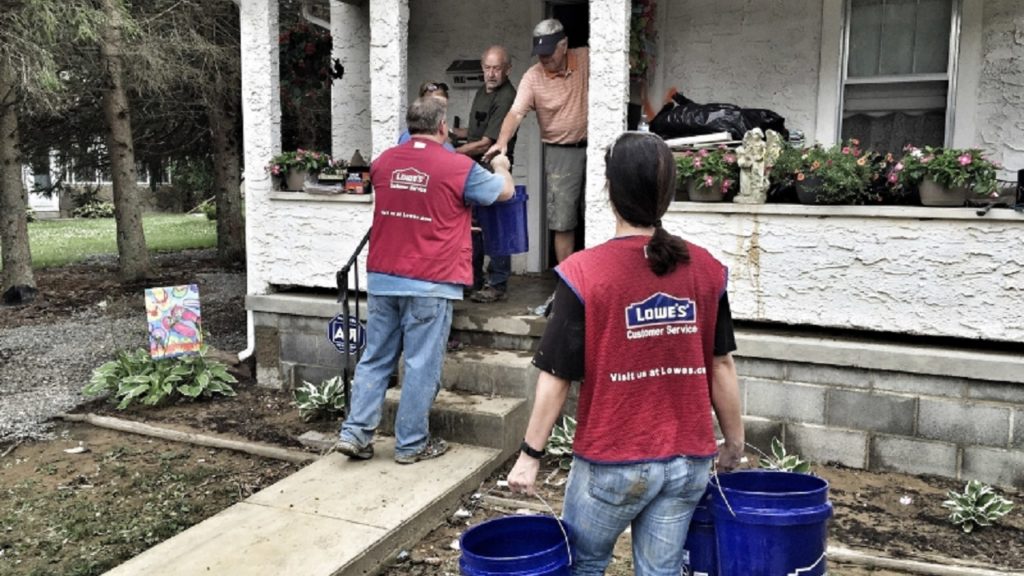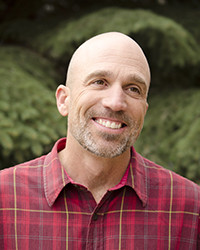 Special to the Philanthropy Journal
Special to the Philanthropy Journal
By Pete Coppolillo
In the mid 1990s Aimee Hurt, Alice Whitelaw, Deborah Woollett, and Megan Parker all faced the same problem: conserving carnivores was expensive and inefficient. Just finding out where carnivores live was a major expense and undertaking. The costs were also apparent in the risks to the animals and the biologist themselves. At about the same time, laboratory techniques for extracting DNA from fecal material were becoming more powerful and more affordable. This spurred these four conservationists to take a more simplistic, yet innovative, problem solving approach. Because even the most secretive carnivores leave messages for each other in the form of feces or “scat,” they decided to look for help from an old friend, a carnivore, and a friend that also happened to have best chemical sensor the world has ever known: dogs.
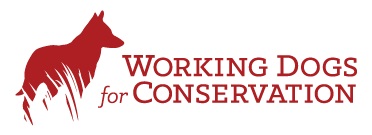 Starting from existing training techniques for narcotics, search and rescue, and cadaver recover, our founders created new and interesting tools: to detect wide-ranging carnivores non-invasively, to uncover illegal snares in Africa, and to find invasive plants, insects, and fish, and even to track (otherwise invisible) contaminants and poisons as they move through terrestrial and aquatic ecosystems. Ultimately, they found that working dogs could be just as, or more, effective than other expensive environmental preservation techniques.
Starting from existing training techniques for narcotics, search and rescue, and cadaver recover, our founders created new and interesting tools: to detect wide-ranging carnivores non-invasively, to uncover illegal snares in Africa, and to find invasive plants, insects, and fish, and even to track (otherwise invisible) contaminants and poisons as they move through terrestrial and aquatic ecosystems. Ultimately, they found that working dogs could be just as, or more, effective than other expensive environmental preservation techniques.
 Working Dogs for Conservation was built upon the potential of dogs and the enormous needs they can fulfill. We work with universities, international NGOs, state and federal agencies, and private industry to put dog to work in protecting wildlife and wild places. Based in Bozeman, MT, we have traveled to over 5 continents and have worked in almost every habitat on earth. We take high-drive (often called “hyper” or “crazy”) dogs from shelters and give them a second chance by putting them on the ground where they can help solve important conservation problems. This simple innovation changed our field for the better. In the past twenty years, dogs have gone from a novel technique for ecological monitoring to become central pillar in conservation and field research.
Working Dogs for Conservation was built upon the potential of dogs and the enormous needs they can fulfill. We work with universities, international NGOs, state and federal agencies, and private industry to put dog to work in protecting wildlife and wild places. Based in Bozeman, MT, we have traveled to over 5 continents and have worked in almost every habitat on earth. We take high-drive (often called “hyper” or “crazy”) dogs from shelters and give them a second chance by putting them on the ground where they can help solve important conservation problems. This simple innovation changed our field for the better. In the past twenty years, dogs have gone from a novel technique for ecological monitoring to become central pillar in conservation and field research.
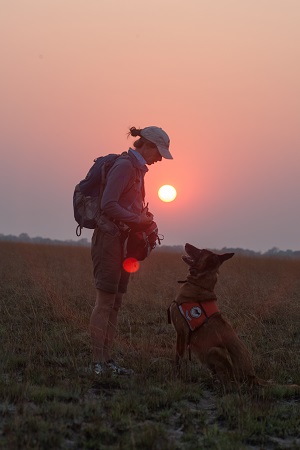 We found that the biggest challenge was not the dogs’ abilities, but in teaching ourselves to ask questions the right way so that dogs can tell us all the things they “know.” Today, our dogs can detect weeds before they break the surface, animals that live below ground, and aquatic organisms invisible to the human eye. We do things like help state, provincial, and tribal governments prevent the spread of zebra and quagga mussels, two nuisance species that cause billions of dollars damage every year. Once we asked the right questions, dogs, we are able to teach them new ways to use their natural traits as incredible trackers. When we do that correctly, the dogs’ success rate approaches 100%.
We found that the biggest challenge was not the dogs’ abilities, but in teaching ourselves to ask questions the right way so that dogs can tell us all the things they “know.” Today, our dogs can detect weeds before they break the surface, animals that live below ground, and aquatic organisms invisible to the human eye. We do things like help state, provincial, and tribal governments prevent the spread of zebra and quagga mussels, two nuisance species that cause billions of dollars damage every year. Once we asked the right questions, dogs, we are able to teach them new ways to use their natural traits as incredible trackers. When we do that correctly, the dogs’ success rate approaches 100%.
Often times, our work is surprisingly straight forward and can lead to saving a place or species in an efficient and innovative way. In 2013 our dogs worked to find patches of forest inhabited by the rarest great ape in the world, the Cross River gorilla, which remains only in a small part of the remote highlands of Cameroon, along the border with Nigeria. Learning where they live allowed our collaborators to focus their conservation efforts on saving those particular patches and connecting them to other suitable habitat so that populations can recover. The scats our dogs found were also screened for human and gorilla diseases, including ebola, in order to help gorillas and people live together without spreading zoonotic diseases.
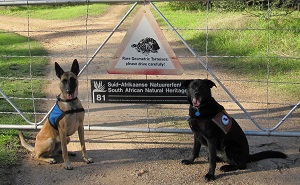 Our techniques working with these dogs has in many cases surpassed expensive technology. In Montana, Carter Kruse, Director of Natural Resources for Ted Turner’s Western Properties removed the invasive brook trout from Cherry Creek. Carter needed a way to verify that every last fish was gone, and once they were gone, to verify that they didn’t migrate back upstream. In the past, he would have used an expensive and time-consuming method called electo-fishing where fish are shocked and float to the surface stunned. He reached out to us and asked whether a dog could detect a particular species of fish in the water. Through an extensive process, we learned that dogs cannot only discriminate brook trout from rainbow trout, but they can do it in a free flowing stream. Soon we hope to use those same dogs to remove other destructive exotic and invasive species and protect threatened and endangered fish elsewhere.
Our techniques working with these dogs has in many cases surpassed expensive technology. In Montana, Carter Kruse, Director of Natural Resources for Ted Turner’s Western Properties removed the invasive brook trout from Cherry Creek. Carter needed a way to verify that every last fish was gone, and once they were gone, to verify that they didn’t migrate back upstream. In the past, he would have used an expensive and time-consuming method called electo-fishing where fish are shocked and float to the surface stunned. He reached out to us and asked whether a dog could detect a particular species of fish in the water. Through an extensive process, we learned that dogs cannot only discriminate brook trout from rainbow trout, but they can do it in a free flowing stream. Soon we hope to use those same dogs to remove other destructive exotic and invasive species and protect threatened and endangered fish elsewhere.
Although our success has led us to grow considerably, we have been careful to recognize how we grow. Rather than trying to expand as quickly as our field has, we have taken the simplicity of our work to heart. We choose now to focus our niche at the “high-end” so that we’re able to inform the growth that happens around us without becoming overwhelmed by growing too quickly or trying to keep up. We believe that in 10 years dog teams will be as common as remote cameras and other “standard” tools in biologists and conservationists repertoires.
 We’re constantly humbled and surprised by what dogs are capable of doing. It is our hope to honor that work as an organization. By maintaining a presence in the field and working closely with partners we’re constantly responding to new problems and unprecedented challenges. We’ve learned that there are endless possibilities for training dogs to dogs to find new approaches in conservation, battle climate change, stop the spread of invasive species and end the brutal and unsustainable trade in illicit wildlife product.
We’re constantly humbled and surprised by what dogs are capable of doing. It is our hope to honor that work as an organization. By maintaining a presence in the field and working closely with partners we’re constantly responding to new problems and unprecedented challenges. We’ve learned that there are endless possibilities for training dogs to dogs to find new approaches in conservation, battle climate change, stop the spread of invasive species and end the brutal and unsustainable trade in illicit wildlife product.
Approaching the complex issues surrounding conservation with a simple approach can be risky, but we’ve found success. We have learned from our founders who pioneered this field, and from the dogs they’ve partnered with, that we must rethink how we approach the questions that surround conservation if we hope to protect the earth.
Pete Coppolillo PhD, serves as the Executive Director for Working Dogs for Conservation. After 20 years of “traditional” research and conservation work, Pete refocused his conservation efforts on one particularly innovative and powerful tool: dogs. During Pete’s time as WD4C’s Executive Director, the organization’s budgets have more than doubled, and the number of projects, dogs and conservation impacts, have increased substantially. Pete received a bachelor’s degree with honors in Biology and Environmental Conservation from the University of Colorado and a Ph.D. in Ecology from the University of California, Davis.




